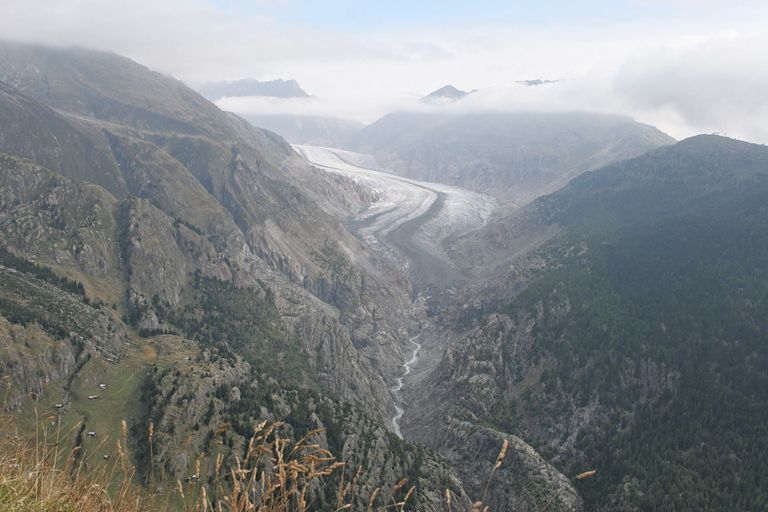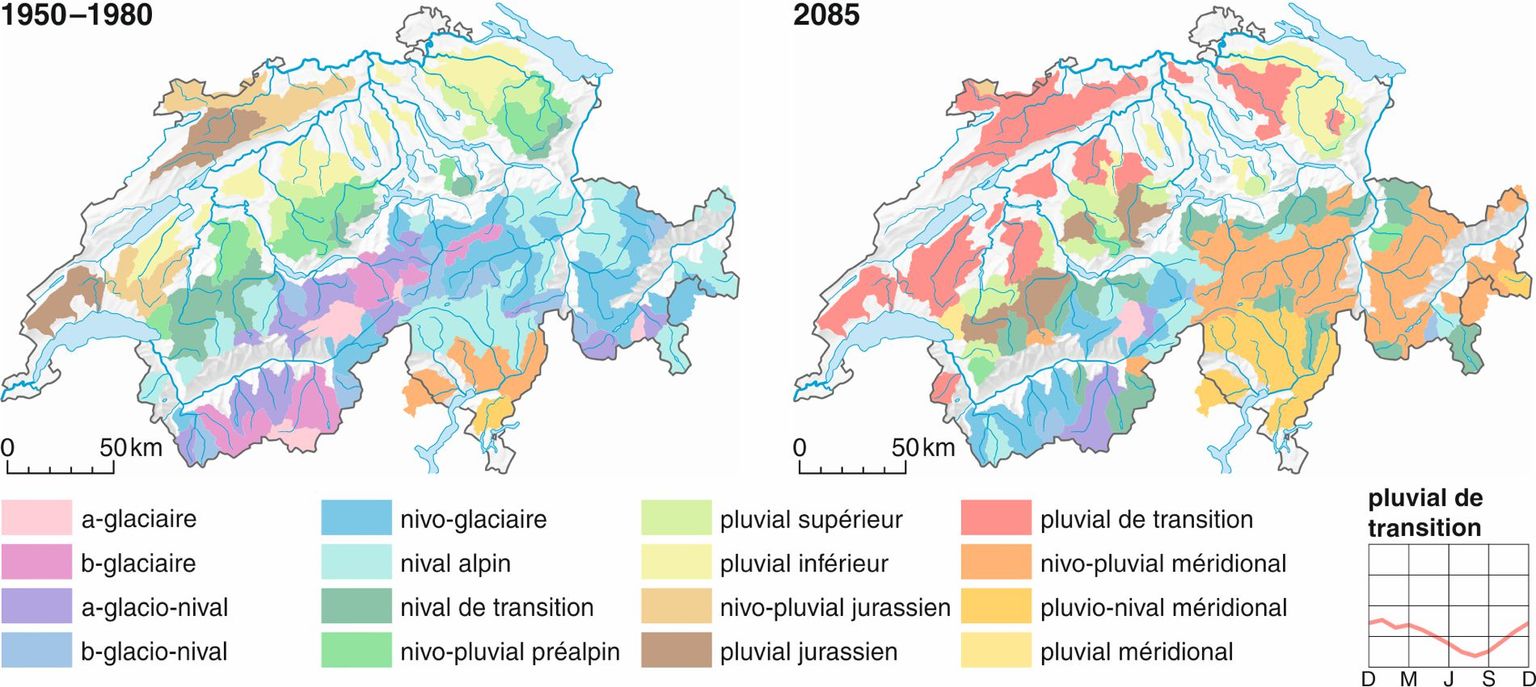Climate change and Hydrology

The total water supply in Switzerland will change only slightly over the next century. However, the seasonality of precipitation will change, with more precipitation falling during the winter and less during the summer. Additionally, the amount of water stored as snow or ice in the mountains will decrease significantly, causing water levels in rivers to change more frequently and with greater variability. Runoff regimes shaped by glacier runoff will almost completely disappear.

Less snow
40 percent of the runoff in Switzerland today comes from melting snow. With climate change, this share will fall to about 25% by the year 2085 because rising air temperatures will cause the snowline to climb about 150 meters per degree of warming. Thus, less precipitation will be stored as snow, with the consequence that it will immediately run off. The first effects are already measurable: the seasonal peak flows in nival-dominated catchments occur earlier in the spring and are less pronounced.
Increasing discharge variability
Presumably, the total annual precipitation falling in Switzerland will not change significantly. However, the seasonal distribution of precipitation will change. Experts expect a strong decrease in summer precipitation of about 20% by the year 2085, and an increase in precipitation during the winter months (September to February). The combined effects of changing seasonality and reservoir size will have strong implications for river runoff. Flood situations in winter and unusually low water levels in summer are likely to occur with increasing frequency, especially in water-sensitive regions like the Valais, Ticino or the Central Plateau. The Central Plateau is even expected to experience a new regime, the “pluvial de transition” (Figure in bottom). This regime is characterized by high flows in the winter and a pronounced minimum during the summer due to a lack of snowmelt in May and June. As hot, dry summers are likely to become more common, very low water levels may also occur more frequently in years with little precipitation.
Big impacts
The increasing irregularity of discharge and the increased number of extreme events will also create challenges for businesses dependent on rivers, such as power producers and water traffic on the Rhine. However, many other people in Europe will also feel the effects of these changes: some of the biggest rivers in Europe begin in Switzerland (Rhine, Danube, Po and Rhone). However, compared to other areas of the world, Switzerland is likely to be spared the worst impacts of climate change. In addition, Switzerland has the scientific knowledge, political will and the financial capacity to adapt to these changes in a timely manner (FOEN 2012b).

